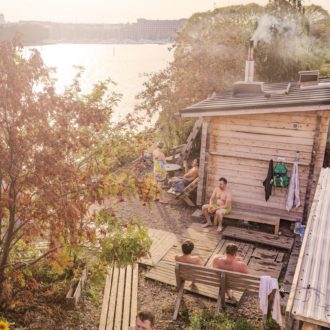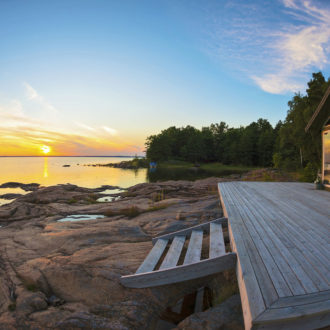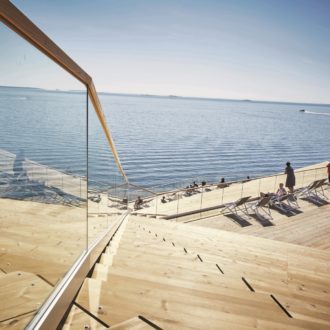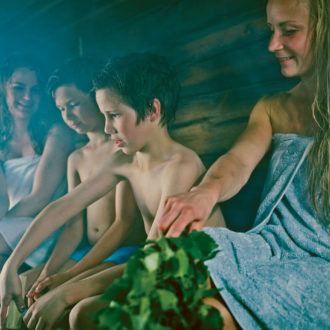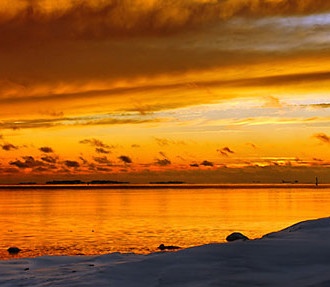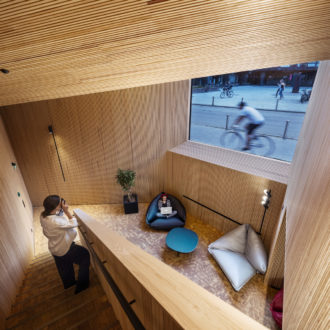The Representative List of the Intangible Cultural Heritage of Humanity, to use its full name, includes “sauna culture in Finland.” Unesco announced the status in December 2020.
“I feel that young people today have really embraced the culture, and are happy to share it forward,” says a Finnish woman, contemplating what the sauna means to her family and to Finnish society. She appears in a video Finland submitted to Unesco when applying for the recognition. “We all have fond memories of going to the sauna and want to teach our children about it, too,” she says.
“You can just forget everything, all of the day’s problems,” says a boy in the video, telling the camera why he likes saunas. “You can just live in the moment,” he says, smiling, as he cools off outside the sauna.
Intangible essence
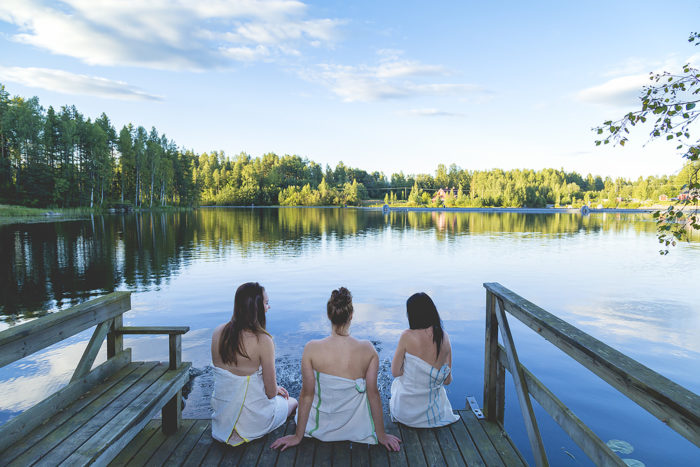
Finnish people associate the sauna with relaxation, conversation, health and connecting with nature.Photo: Hanna Söderström/Sauna from Finland
Intangible cultural heritage refers to traditions and processes that we inherit and then pass on, which include all the knowledge, skills and experiences that aren’t embodied in a physical form.
Finnish sauna culture is more than the sauna building or room. It is the heating of the stove; the löyly (the Finnish term for the steam and heat that rise and spread when you pour water onto the hot rocks on top of the stove); the chatter among friends and family; and, for some brave souls, the euphoric feeling that results from plunging into icy water and scampering back into the steamy heat. All of this, and more, forms the intangible heritage of Finnish sauna culture.
The sauna in everyday life

Part of Finnish sauna culture is the ritual of chopping and carrying the wood to heat the stove, as in this scene from eastern Finland.Photo: Harri Tarvainen/Business Finland
Leena Marsio, a senior advisor at the Finnish Heritage Agency, worked on the Unesco application. “Sauna is such a big part of Finnish people’s lives, both in everyday life and at festive moments,” she says.
Many people in Finland consider saunas more essential to life than folks in other countries would probably imagine. “A Finn sleeps, drinks, eats, and goes to the sauna,” says Marsio. “There are saunas elsewhere in the world, but nowhere is there such a sauna-crazy people as the Finns.”
Depending on the source of your stats, between 60 and 90 percent of Finnish people have a sauna at least once a week. The accessibility of saunas in Finns’ everyday lives is visible in the sheer number of saunas: there are 3.3 million of them in Finland, which has a population of 5.6 million.
More than just bathing
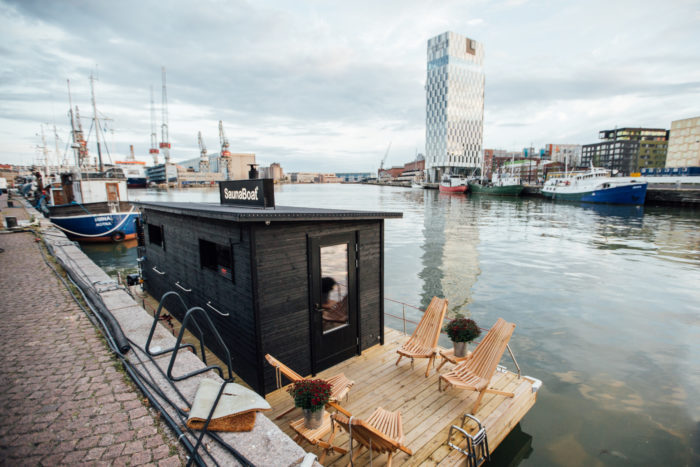
Finnish sauna enthusiasts have invented all sorts of tent saunas, car saunas, popup saunas, ice saunas, portable saunas, backyard saunas, rooftop saunas, camper-van saunas and, yes, even boat saunas such as the one in this picture.Photo: Julia Kivelä/Helsinki Marketing
Ritva Ohmeroluoma, a member of the Finnish Sauna Society board of directors, was also involved in the Unesco application. She explains how sauna culture has historically meant more than heat and washing.
“Up through the 1950s, Finns were born in the sauna because it is hygienic,” she says. “You can keep it warm and have plenty of warm water on hand. The bodies of the deceased were washed there before their final journey. Meat was cured in the sauna. My grandmother taught me to make home-brewed beer [sahti], which we made in the sauna.”
“When establishing a family, you’d first build the sauna and live there; it provided a place to cook and clean yourself, and warmth. It was also quick to make. Then you’d progress to building the house.”
A recently published 15-year research project on the health effects of sauna, led by professor Jari Laukkanen, a cardiologist, showed that frequent visits to the sauna (four to seven times a week) cut the risk of having a stroke by more than 50 percent compared to one weekly visit. Habitual sauna use also significantly reduces the risk of cardiovascular disease. For the heart, taking a sauna is the equivalent of going out for a brisk walk.
Foundational experience
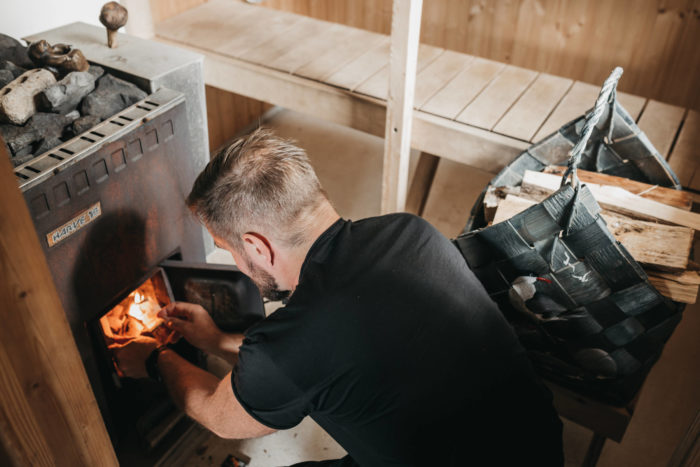
Wood-heated stoves, especially common in saunas at summer cottages, must be lit several hours before you want to use the sauna.Photo: Emilia Hoisko/Visit Finland
The best sauna, Finns say, is the one at your grandparents’ summer cottage. It’s where your memories were made, the archetypal foundation by which you measure all other saunas.
My own experience as a Finnish American was my grandmother’s sauna in Ilomantsi, in North Karelia, near the Russian border. I would arrive after many days of travel by plane, train, bus and taxi. I carried the load of birch wood into the barn after a tractor delivered it in the winter, and from there to the sauna.
As we heated the sauna stove, it also warmed a large cauldron of water. We bathed by ladling water over our soapy heads from a small tub. The sauna was large and lit by the glow of the flickering fire.
At home in the world
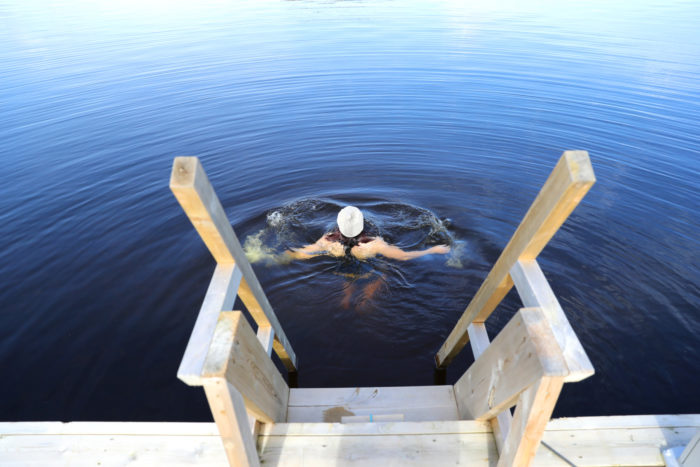
Brave souls get to experience the euphoric feeling of plunging into icy water between turns in the sauna.Photo: Harri Tarvainen/Sauna from Finland
I’ve diagnosed myself as sauna-crazy, and am always searching for saunas wherever I am in the world.
Last summer, my family and I moved to Zagreb, Croatia. In a spa adjoining a public pool, I found an entire sauna – wooden room, wooden benches, stove – by Harvia, a Finnish sauna company. I was alone, so I turned the sauna up to 100 degrees Celsius (212 Fahrenheit) and threw löyly on the stones until the rising steam made my back feel scorched. It thrilled me to find this piece of Finland in another country.
Perhaps this is the key to the sauna culture of Finland: Once you’ve tried it, all subsequent visits are a return to a familiar space, physically and emotionally. In some cases, you may be going back to your childhood, or even the childhoods of your parents and grandparents, or to other experiences of Finnish culture, people and landscapes.
The sauna is a place where all Finns, and indeed the whole world, are welcome. As the Unesco recognition indicates, Finland’s sauna culture is an invaluable heritage. And it’s alive and thriving.
For the application for Unesco’s Intangible Cultural Heritage status, several organisations joined forces to create videos that show the significance of sauna culture in Finland.Video: Finnish Sauna Society/Ministry of Education and Culture/Finnish Heritage Agency
By Eric Bergman, February 2021
